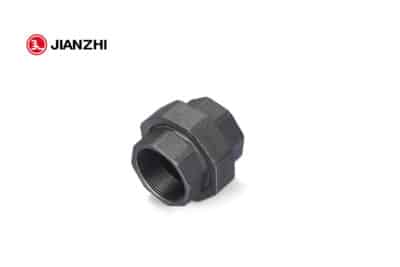As a globally recognized threaded fittings factory, Jianzhi continues to uphold its reputation for delivering reliable and durable products that meet the stringent demands of various industries. By focusing on threaded fittings and expanding Jianzhi pipe fitting wholesale services, we are not only meeting the growing market demands but also setting new standards in the industry.

What does nominal pipe size mean?
The measurement used to determine nominal pipe size is based on the inner diameter as opposed to the outer diameter. The amount of flow rate required via the inner diameter of the tube or pipe is determined while designing the plumbing for a home or other structure. Because the fittings connect over the exterior of a plumbing pipe, they measure larger than the pipe’s designated size.
Usually, the side of the tube has a small print marking the OD tubing size. You should search for fittings that are the right size if the tubing is sized based on its outside diameter. For example, a 1/2 OD push-to-connect fitting goes with a 1/2 inch OD tube. But if you buy a 1/2 inch fitting designed for CTS (measured by ID) by mistake, then it won’t fit properly. The CTS pipe fits nicely into a 1/2 inch CTS fitting.
When using OD versus ID fittings
In fact, CTS is available down to 1/4 inch, albeit it’s not a common application. Because CTS fittings are used for domestic plumbing more frequently than ID nominal size parts, they are most commonly found in 1/2 inch, 3/4 inch, and larger sizes. OD sized parts are used in smaller appliances, such as under-counter filters that connect to your refrigerator or ice maker.
How to gauge the size of pipe fittings
Confusion may also arise while measuring thread size. The threads have the same size as the CTS fittings. They are measured based on the inner diameter, or nominal size, of the pipe. The diameter of a 1/2 inch thread, when measured, will be more than 1 inch since it is intended to accommodate a nominal pipe fitting. To ensure the proper fit, the female fitting should be measured exactly the same as the male fitting.
Even though the part specifies 1/2 of an inch, a 1/2 inch fitting will not truly measure 1/2 of an inch if the thread size is measured.
ID tubing is not based on real measurement, but rather on the pipe’s nominal size.
OD tubing, as the name implies, fits into OD size tubing and is based on the outer diameter (the one you measure with a ruler).
To buy the right pipe fitting according to the pipe size, follow these steps:
Determine the Pipe Size: Measure the outer diameter (OD) of the pipe if it’s not already known. Pipe sizes are typically referred to by their nominal pipe size (NPS) or the actual outer diameter, depending on the type of pipe (e.g., copper, PVC, or steel). For threaded pipes, the inner diameter (ID) is often what’s referenced.
Check the Pipe Material: Ensure that the fitting is compatible with the material of the pipe. Common materials include steel, copper, PVC, and PEX. Each material has specific fittings designed for it.
Identify the Thread Type (if applicable): For threaded pipe fittings, confirm the thread type (e.g., NPT, BSP) and ensure that the fitting matches the threading on the pipe.
Select the Correct Fitting Type: Depending on the application, choose the appropriate fitting type (e.g., elbow, tee, coupling, reducer). Make sure the fitting’s size corresponds to the pipe’s size.
Verify Pressure and Temperature Ratings: Ensure that the fitting you select can withstand the operating conditions, such as pressure and temperature, of your system.
Jianzhi’s threaded pipe fittings are engineered to meet international standards, ensuring compatibility and performance in a wide range of applications. The company’s products undergo rigorous testing and quality control processes to ensure they meet the highest standards of safety and reliability.
